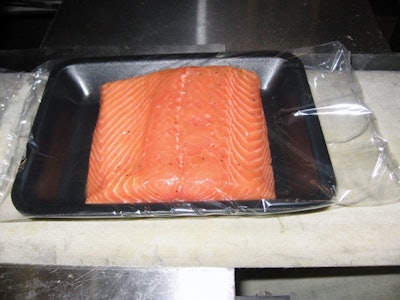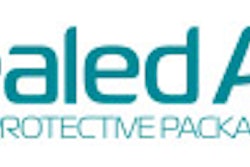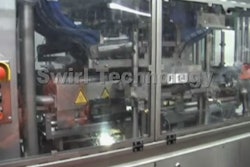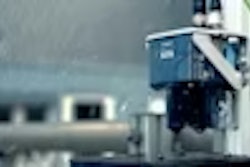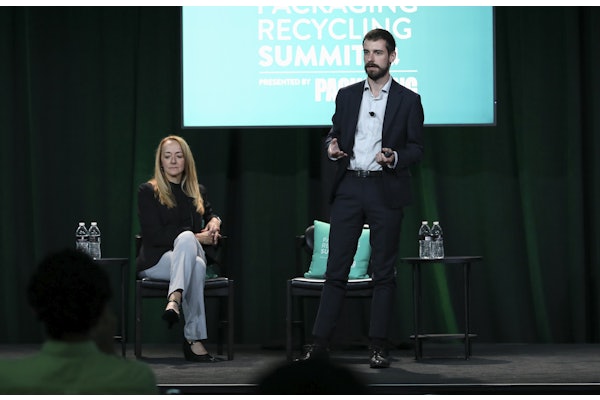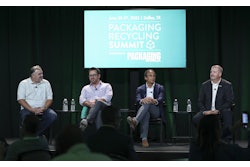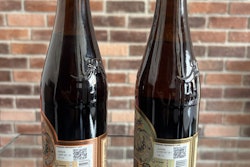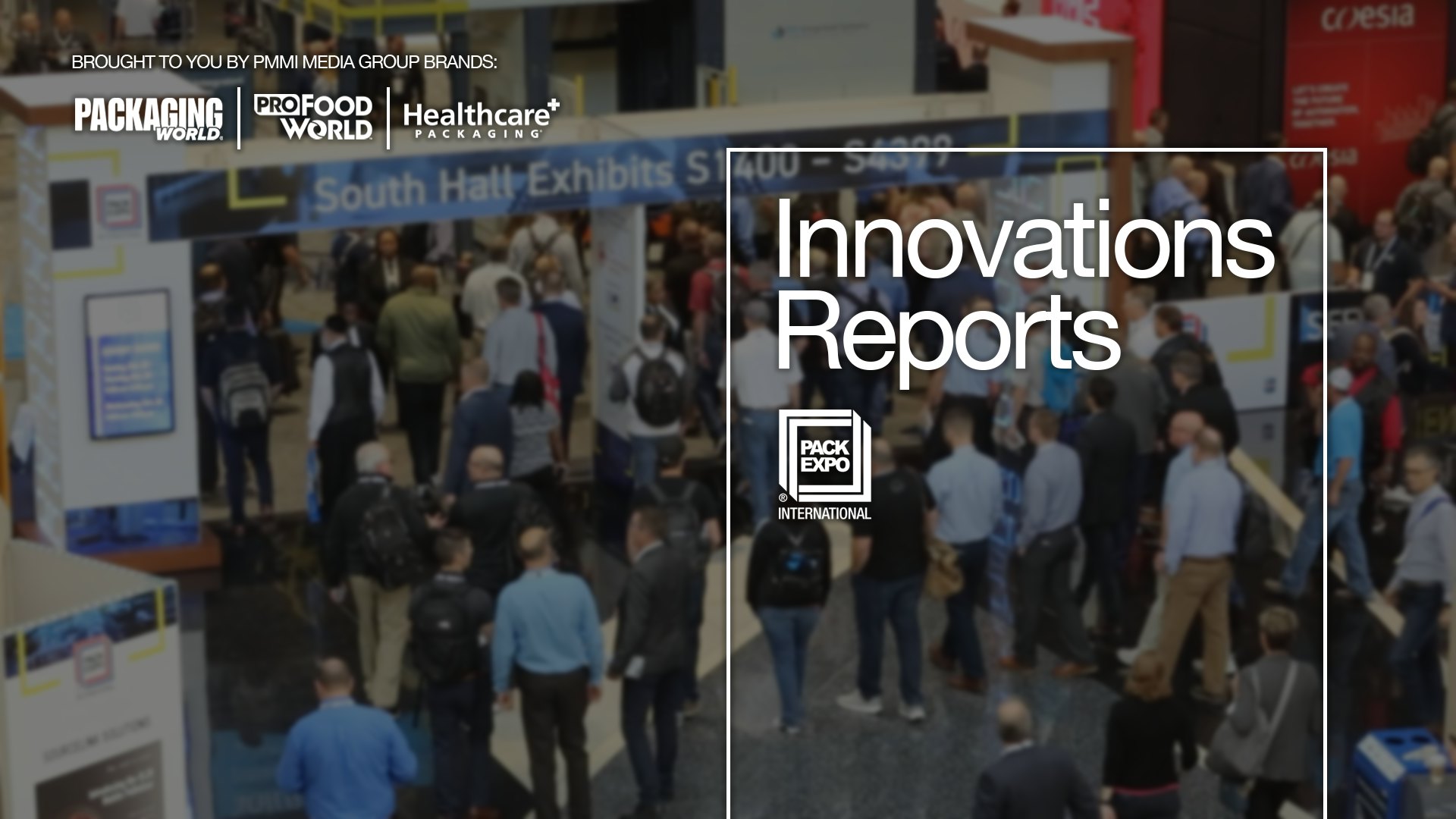For those who feel that only the most daring would take the plunge into case-ready fresh seafood, Ronnie Wrenn, president of Fresher Than Fresh (FTF), Gastonia, NC, is that bold entrepreneur. However, Wrenn relies on tried-and-true science to create a line of fresh seafood in modified atmosphere packaged trays. Packaging machinery and materials play an invaluable role in helping his company guarantee product safety and freshness—“mathematical freshness,” as he calls it (see sidebar)—for 10 days at 38° F for seafood that is never frozen.
That’s no small task: Wrenn recognizes that fish and related products are the most perishable of all protein foods, and that makes it the most challenging to package and to market.
“We started this business in 2000 to promote case-ready seafood,” says Wrenn, “and we believe that case-ready seafood is really the wave of the future.”
For Wrenn, the future is now, and it is the reason he has anchored FTF’s packaging operations with a Model 750 leak-proof gas-flush overwrapper from the Ossid Division (www.ossid.com) of ProMach. The installation of the overwrapper in late 2006, when it replaced two indexing tray sealers, represented a major conversion for FTF from lidstock-sealed trays to overwrapped trays.
The switch was prompted by a customer preference for packs that have the appearance of being store-prepared rather than for the lidstock-sealed packs the company had been providing, says Wrenn, though there is an economical benefit as a bonus.
“The package looks like it has been overwrapped in the stores, like a case-ready package of chicken,” says Wrenn. This move to overwrapped trays parallels the case-ready meat trend embraced by Wal-Mart, among others, reported on in our June issue.
The products are packed into standard polystyrene (EPS) foam trays and are covered with a barrier film from Cryovac/Sealed Air Corp. (www.cryovac.com). Because the film completely wraps and hermetically seals each tray, Wrenn was able to replace the more expensive rigid barrier trays the company had been using with standard EPS trays and let the film wrap provide the needed barrier. The film is Cryovac’s 75-ga BDF 2060 multilayer, high-barrier film.
“We can provide about three times the shelf life of any conventional overwrapped tray,” says Wrenn. “Our MAP packs provide the cleanest, safest, most verifiable and traceable way that you can buy fish today.”
FTF also packs institutional products, though Wrenn estimates that 80% of his production output is through the Ossid overwrapper.
The backbone of MAP
The overwrapper has a gas backflush capability that FTF uses to inject a mixture of gases into the package headspace. Along with the packaging machinery and materials, it forms the third leg of Wrenn’s MAP strategy. “There is less than one-half of one percent oxygen left inside the package,” he notes. “The barrier film and the gas flush create an environment where aerobic [spoilage] bacteria cannot flourish.” He adds that the oxygen content of the seafood itself help prevent the package from harboring anaerobic bacteria.
The gas mix consists of an “active ingredient” of at least 35% carbon dioxide—CO2 is the backbone of MAP, Wrenn says—along with a “filler” of inert nitrogen. The mixture is adjusted according to the species.
“The idea is to put to ‘sleep’ any aerobic bacteria present so that it doesn’t reproduce,” Wrenn explains. He credits research at Florida State University and North Carolina State University for the guidelines. FTF also uses other techniques, such as carefully monitoring the quality of the seafood it uses in the first place and using ozonated water throughout its processes to kill any bacteria present.
To ensure quality, each MAP-packed tray is provided with a Fresh-Check® consumer-friendly time temperature indicator (TTI) from TempTime (www.temptimecorp.com). A color indicator turns darker over time and, depending on the storage temperature, can be compared to a preprinted standard indicator color surrounding it on the TTI (see image below). The color change is indicative of the product quality and its potential for spoilage.
“For about three years, we have been using a custom TTI set for 240 hours at 38 degrees,” says Wrenn. “The product lasts a lot longer the colder it stays.” The TTI is applied to the tray after sealing. The same TTI is used for all of its products and is based on a worst-case scenario, thus less-sensitive products actually have more shelf life than indicated, according to Wrenn. He pegs the per-label cost of the TTI at seven cents.
Packaging production begins with staged, filled product trays from racks that are placed single-file onto the infeed of the overwrapper at a rate of 45 trays/min, though the machine is capable of operating 60/min, Wrenn points out. The machine folds the film to form it into a tube as it seals the film edges along the bottom of the package, then it seals the end seals. The overlapped film along the tray bottom is cut and collected in a trim-seal canister before back and front are sealed. The wrapper uses a patented gripper chain to maintain positive control of the film edges. A moving assembly section makes the end seals—the trailing edge of the lead pack and the leading edge of the trailing pack—and cuts the trailing seal to separate the individual packs.
The wrapped packs continue immediately into a 4-ft-long Ossid heat tunnel that shrinks the film tight around the package using resistance heat. First the trailing end is shrunk and then the leading edge, and then a portion of heat is applied to the top to tighten the film across the package top for a neat appearance.
After shrinking, the packs proceed through a quick sequence of labelers. First, a Koch Equipment (www.kochequipment.com) labeler applies preprinted top and bottom labels. The top label is preprinted with product branding, and the bottom is preprinted with nutrition facts. The TTI is preapplied to the bottom label.
The packs also travel to a Bizerba USA (www.bizerbausa.com) weigh scale/labeler that weighs the packs and applies a small label with real-time printed information to the top corner of the tray. It includes a bar code, use by date, country of original labeling (COOL), the weight, and the price. The tray packs are then placed four, six, or eight into a case for distribution.
Versatility a big plus
Wrenn likes the overwrapper’s speed and especially its versatility in running different tray sizes. “That’s one of the beauties of this machine as opposed to a lidstock machine,” says Wrenn. “You can adjust it without retooling to just about any size tray, from small trays all the way to family pack-style trays. There is a whole range of sizes, just about any tray that Cryovac makes, we can run on this machine.”
Currently, Wrenn runs trays from 4 1⁄2 in. by 8 in. to 8 1⁄2 by 16 in. and several sizes in-between. All told, FTF runs about 10 different tray sizes for seafood that includes salmon, catfish, tilapia, shrimp, mahi mahi, and shark—“just about anything,” adds Wrenn. FTF conducts about three changeovers a day on the overwrapper, each taking less than five minutes, he adds.
The line is operated daily for one shift. “I wish we were running three shifts,” admits Wrenn, “but we’re growing every year, so we’ll get there.”
The products are sold in about 600 stores in the region, including Harris Teeter, though Wrenn has hopes and plans for additional customers. One encouraging trend that Wrenn points to is the increasing importance of track-and-trace technology: Each pack has a serialized number printed on the variable label in the front corner. “We can track each package and each fish inside each package back to its origin,” asserts Wrenn. “We know exactly where it comes from: We know which lot it comes from, and where that lot came from. At some point, this capability will bring another major retailer onboard with our case-ready program.”
The main barriers to market penetration are neither packaging nor technology. Retailers and consumers are the roadblocks, Wrenn says. He believes the benefits of the case-ready format—convenience, centralized manufacturing, quality, and shrink reduction—are even more important for seafood than for meat or poultry, mainly because seafood is much more perishable than beef or chicken.
“We still have not been able to convince all the [regional] grocery stores,” he says. “Many retailers continue to think the ice counter is what they’re all about, yet ice counters cannot protect the fish from cross contamination like our packages can.”
As he has done for the eight years since FTF was formed, Wrenn will continue to maintain the determination of a fisherman to lure retailers and consumers to the benefits of his fresh, case-ready seafood.
